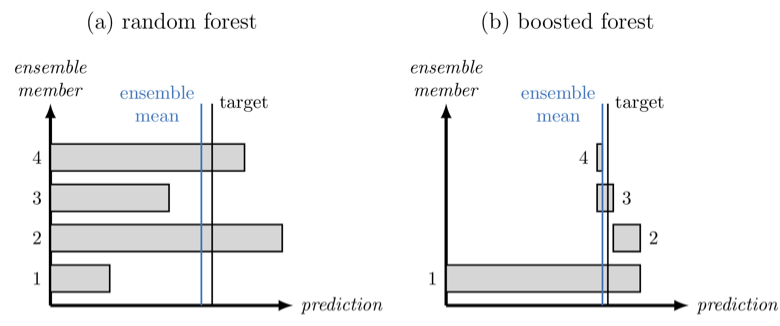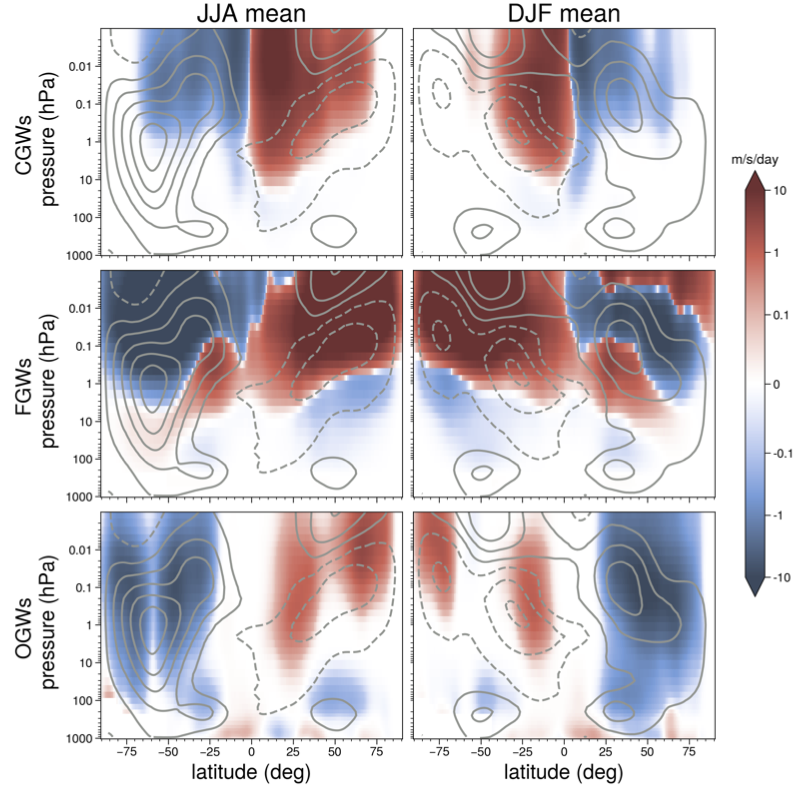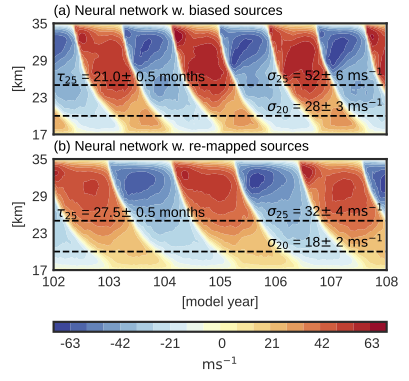The Impact of Numerics on Circulation and Transport in Atmospheric GCMs
Published:
Aman Gupta is defending his thesis on Wednesday 18 December at 1:15 in Warren Weaver 1302. Come see the world’s leading expert on trace gas transport through the stratosphere by the dynamical cores of atmospheric models!
Accurate representation of tracer transport — the movement of trace constituents by the atmospheric flow — continues to be a challenge for climate models. Differences in resolved dynamics, biases from physical parameterizations, and numerical biases in employed schemes can result in large variations in transport, even among state-of-the-art climate models. These differences result in disagreement among models when projecting the recovery of the ozone hole and the evolution of stratospheric ozone throughout the 21st century, or for projecting differences in precipitation in a changing climate.
In this dissertation, we isolate the role of numerics on stratospheric transport. We consider four dry dynamical cores — the primitive equation solver for climate models — employing different numerical methods and disengage any physical parameterizations that approximate sub-grid physical processes. This allows us to exclusively connect the transport biases to numerics, identify model strengths and limitations in representing stratospheric dynamics and transport, and test model robustness to changes in resolution. Two separate benchmark tests are proposed to estimate transport timescales in the four dynamical cores, in response to identically defined diabatic forcings and tracer boundary conditions. The two tests collectively reveal an extreme sensitivity of some models to the vertical (more so than horizontal) grid resolution in representing the tropical stratosphere, and also establish the sensitivity of transport to tropical dynamics. In addition, the tests show that the idealized tracer profile in modern dynamical cores converges, but to different values. This demonstrates that the choice of dynamical core has consequences for stratospheric transport.
A simplified theoretical model of stratospheric transport is employed to better understand the results from the benchmark tests. The theoretical leaky pipe framework is used to quantify the vertical diffusive fluxes and mixing fluxes across subtropical transport barriers by connecting the meridional and vertical gradients of age-of-air (which is a quantitative measure of transport timescales) to the diabatic mass transport rates. A combined use of numerical models and theoretical models helps us isolate fractional impacts of the different dynamical (diabatic advection, isentropic mixing) and numerical (diffusive) processes on transport. The analysis enables us to explain the extent to which inter-model differences in diabatic circulation, isentropic mixing and numerical dissipation affect the distribution of tracers throughout the whole stratosphere.
Another aspect investigated in the study is the shift in midlatitude jet position in response to a human induced warming. Climate models uniformly project an increase in tropopause height with increasing carbon dioxide concentration. Quantitatively, however, the models disagree in their projections of extent of this shift, making it difficult to understand the mechanism responsible for this trend. We investigate the shift in dry idealized models of the atmosphere. We observe a regime behaviour in dynamical cores in the way the jet responds to changes in an externally forced tropopause height. More precisely, when the tropopause height drops below a critical threshold, an abrupt equatorward jump in the midlatitude jet is observed. An otherwise steady equatorward moving jet near 45N suddenly transitions to 30N in response to small changes around the critical tropopause height. In order to understand this sudden transition, we follow a previously proposed eddy length scale argument and study changes in eddy momentum transport with changes in tropopause height. Understanding this regime behaviour in a hierarchy of models can help better understand the biases noticed among more complex models, and also act as a cautionary tale for future idealized studies focused on unraveling the mechanisms behind the shift.




